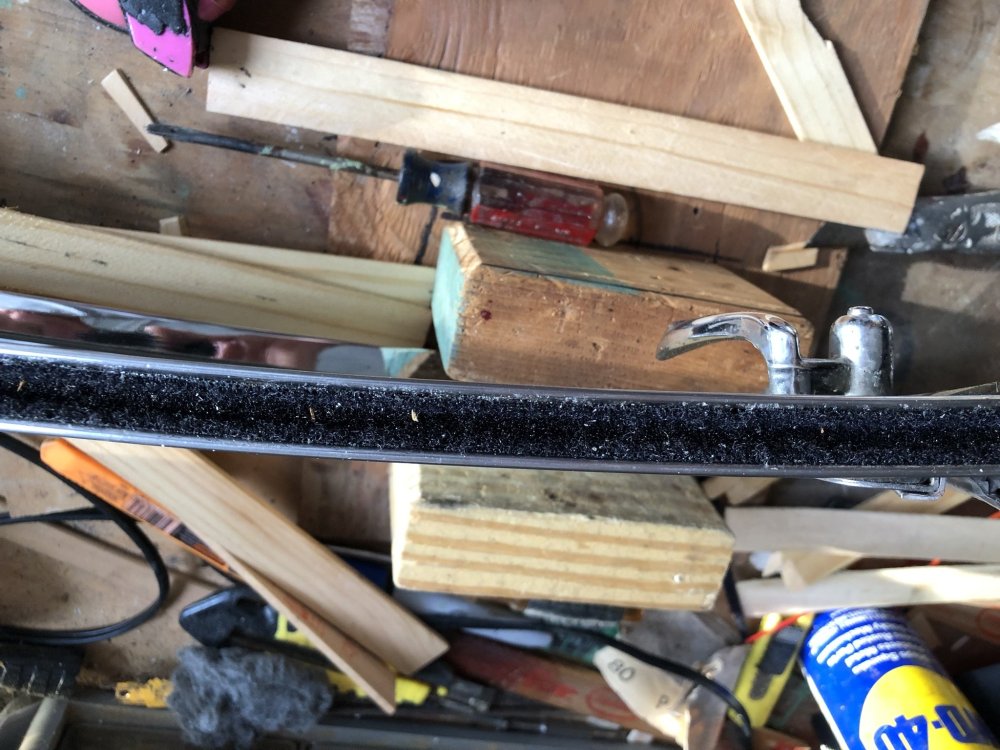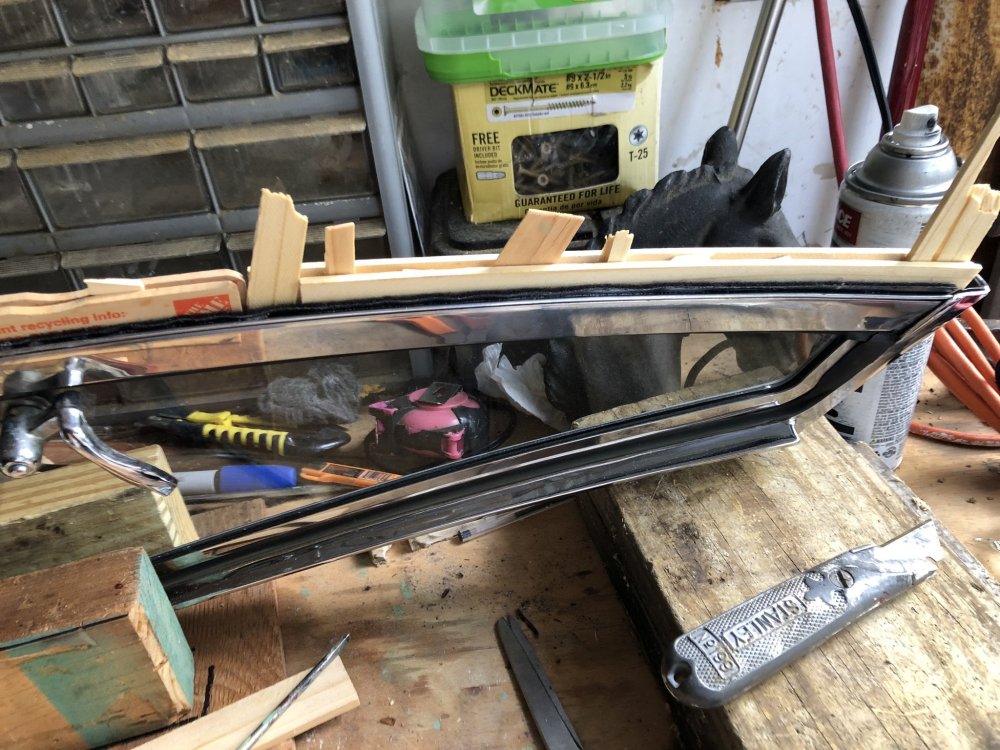
Nelson
AOAI Forum Members-
Posts
582 -
Joined
-
Last visited
Content Type
Profiles
Forums
Events
Everything posted by Nelson
-
Stuart. My friend thought the same as you that something was missing. When they loosened the distributor and raised it just a little then cranked the engine they actually saw the distributor fall into place under its own weight. You won’t lose timing as it never disengages the cam gear. There is very little engagement of the tang in the oil pump, maybe an 1/8 to 3/16. There is nothing else between the end of the distributor drive and the oil pump drive gear to get n the way.
-
Anybody have a report on this years event? Any photos etc.? I wanted to make it but just too many other things things going on.
-
I’m sure what you did was to drop the distributor in and clamped it down thinking all is lined up.The tang on the distributor shaft did not engage the oil pump. I’ve seen it happen before and as recently as a few months ago when a friend put the distributor back in his R2 wagon and got no oil pressure. What I told them I will tell you. Loosen the clamp on the distributor enough to lift the distributor up about a 1/4 inch but not loose gear engagement. Pull the coil wire so it doesn’t start. Bump the starter a few times to get the engine to turn over a few revolutions. Watch the distributor closely and you will see it drop down flush with the block. This happens when the distributor aligns with the oil pump. Tighten the clamp. Start it and check for oil pressure. Now set the timing and all will be fine.
-
Thanks for posting the photos. That fix looks like a good one. I think you found the real culprit.
-
So the plugged pvc wasn’t the problem after all?
-
Elmer’s car was a gold with orange interior R1 4 speed. Was that the one in Hemings? George Krem had a super low mileage 63 gold with fawn interior that was pretty well known also.
-
I think all the Avantis went onto the roll test at the end of the line. I think that test is often referred to as a dyno check and maybe it was to some degree. I doubt if any paper work as to HP was actually generated on each car but rather a stationary road test to make sure the car ran through( the gears and developed acceptable power according to acceptance criteria. Drive train noises etc were also noted during this test. I once talked to a Notre Dame student who worked at Studebaker during the summer. One of his jobs was working on the Avanti doll up line where air cleaner etc were installed. He told me some horror stories about the guy he worked with such as tapping the tobacco out of his pipe into a valve cover breather or putting some nuts and bolts into the breather and watching as the car was put on the roll test. The engine would rattle badly during test and the car would be shut down and pushed into the repair bay.
-
He’s had several R3 engines but the Avanti I am referring to was in a 63 so not a factory car. Dan and I grew up together in Cincinnati. We both worked at Burger Chef restaurant at the time. I remember he bought a beautiful R2 GT and would park it in the furthest spot from the store where it would be safe…..he thought. However, a fellow riding a horse rode up next to it and the horse turned and kicked the side in.😵💫 Sometimes you can’t win.
-
I agree Duncan. I am just saying I had no desire to own a power shift until I got the ride in Dan’s car years ago. The 4 speed is sure fun to drive.
-
I was sold on 4 speeds only until one day, my buddy, DanDumas, stopped over with (at that time) his recently acquired R3 Avanti with a power shift. It had a bad supercharger since the day he bought it. I sold him a nos Paxton for $75 and we put it on the car and went for a test drive. We left my dad’s drive turning left then left again onto Pfiefer Rd. Dan pulled it down to first gear and put the pedal to the floor. The Avanti pulled very hard and when he upshifted to second the rpm’s went wild. I thought he had blown the transmission and so did Dan. Dan let off the throttle an the Avanti and it regained traction. We both realized the second gear shift was so fast and hard that we were actually smoking the tires in second gear. From that time until today I’ve had a special respect for the ps Avanti transmission..
-
That sure is wrong. So the shortest leaf is against the axle pad? Does the car sit lower?
-
Can a PCV really reduce the pressure in a crankcase by that much? It seems like it would be no match for the valve cover breathers. Do you theorize the valve was stuck open allowing pressure from the blower to increase pressure n the crankcase?
-
I’m guessing now but I remember Blake made one for himself and a few more so my “guess” is three cars.
-
I guess George came up with idea. I’m glad he thought it up and tried it out. I have to finish the install today. I think I’ve got a broken roller in the regulator.
-
I got my drivers side wing out this afternoon. I made a simple wooden fixture to set it in. I ran a razor knife down the inside edges and just pushed a screw driver under the old felt and I came right out. I scraped it with the screw driver edge then used lacquer thinner and steel wool to clean it up. I used the adhesive backed Velcro. To aid the install I brushed lacquer thinner on the adhesive side and down in the channel to get the interface slick not sticky. I pushed the felt into the track with two wooden paint stir sticks side by side and left them inserted and continued with two more until it was all assembled. After it dries I’ll use a razor knife to go down the edge cutting off the excess with the wood still in place. I bought 2 inch wide black Velcro with an adhesive back at JoannFabrics at $12.99 yard but you get 40% off with a coupon. The 2 inches is about what you want just cut off the over hang excess. The length is right about 3 ft. Naturally you want to use the fuzzy part of the Velcro and throw the other half away. Photos attached. Pardon the work area, this was a spur of the moment undertaking.
-
I got my drivers side wing out this afternoon. I made a simple wooden fixture to set it in. I ran a razor knife down the inside edges and just pushed a screw driver under the old felt and I came right out. I scraped it with the screw driver edge then used lacquer thinner and steel wool to clean it up. I used the adhesive backed Velcro. To aid the install I brushed lacquer thinner on the adhesive side and down in the channel to get the interface slick not sticky. I pushed the felt into the track with two wooden paint stir sticks side by side and left them inserted and continued with two more until it was all assembled. After it dries I’ll use a razor knife to go down the edge cutting off the excess with the wood still in place. I bought 2 inch wide black Velcro with an adhesive back at JoannFabrics at $12.99 yard but you get 40% off with a coupon. The 2 inches is about what you want just cut off the over hang excess. The length is right about 3 ft. Naturally you want to use the fuzzy part of the Velcro and throw the other half away. Photos attached. Pardon the work area, this was a spur of the moment undertaking.
-
I think this was addressed at some time but I can’t find it. I think someone had a repair using Velcro?
-
I can’t think of a better person to be given the 2024 Spirit of Studebaker award. Anybody that knows Ed knows without a doubt that he is passionate about Studebaker and seems to be absolutely tireless when it comes to promoting the marque. CONGRADULATIONS Ed!!
-
Maybe the hood or something related like hood skin or hinge?
-
Not for certain but I’m going to say true. SN60 would be 1960 and I know they had external oiling systems earlier (engine oil) and self contained available for sure.
-
Dwight. I bet you can recall the R3/R4 break in procedure. After 750 miles(?) the engine can be taken to 7000 RPM.
-
Actually that test was of the #1 Daytona R3 convertible. The #3 was an R4.







